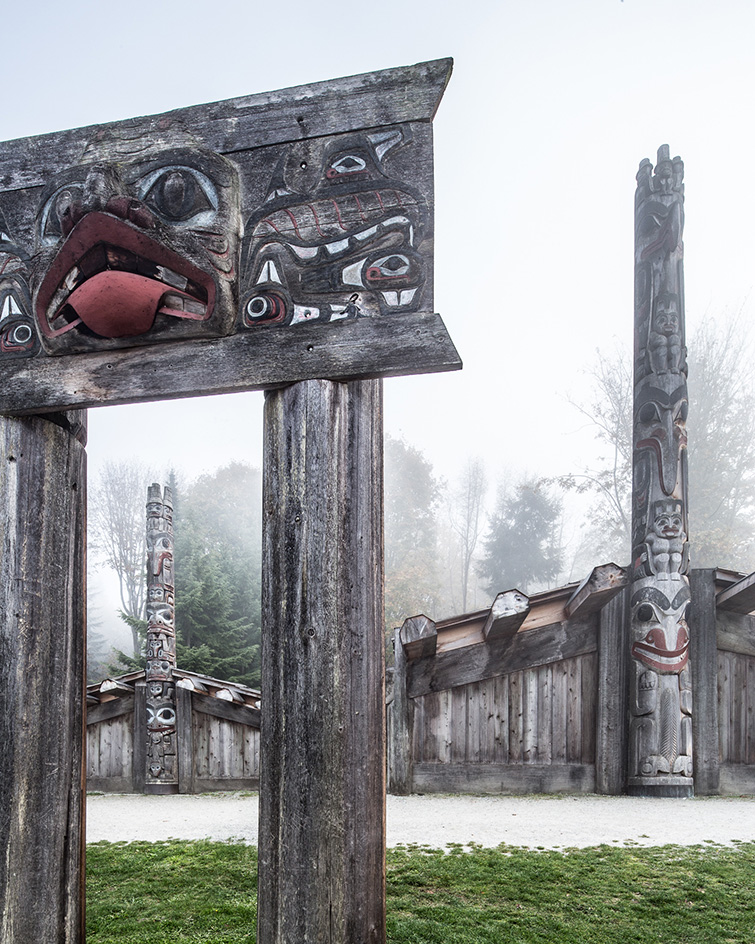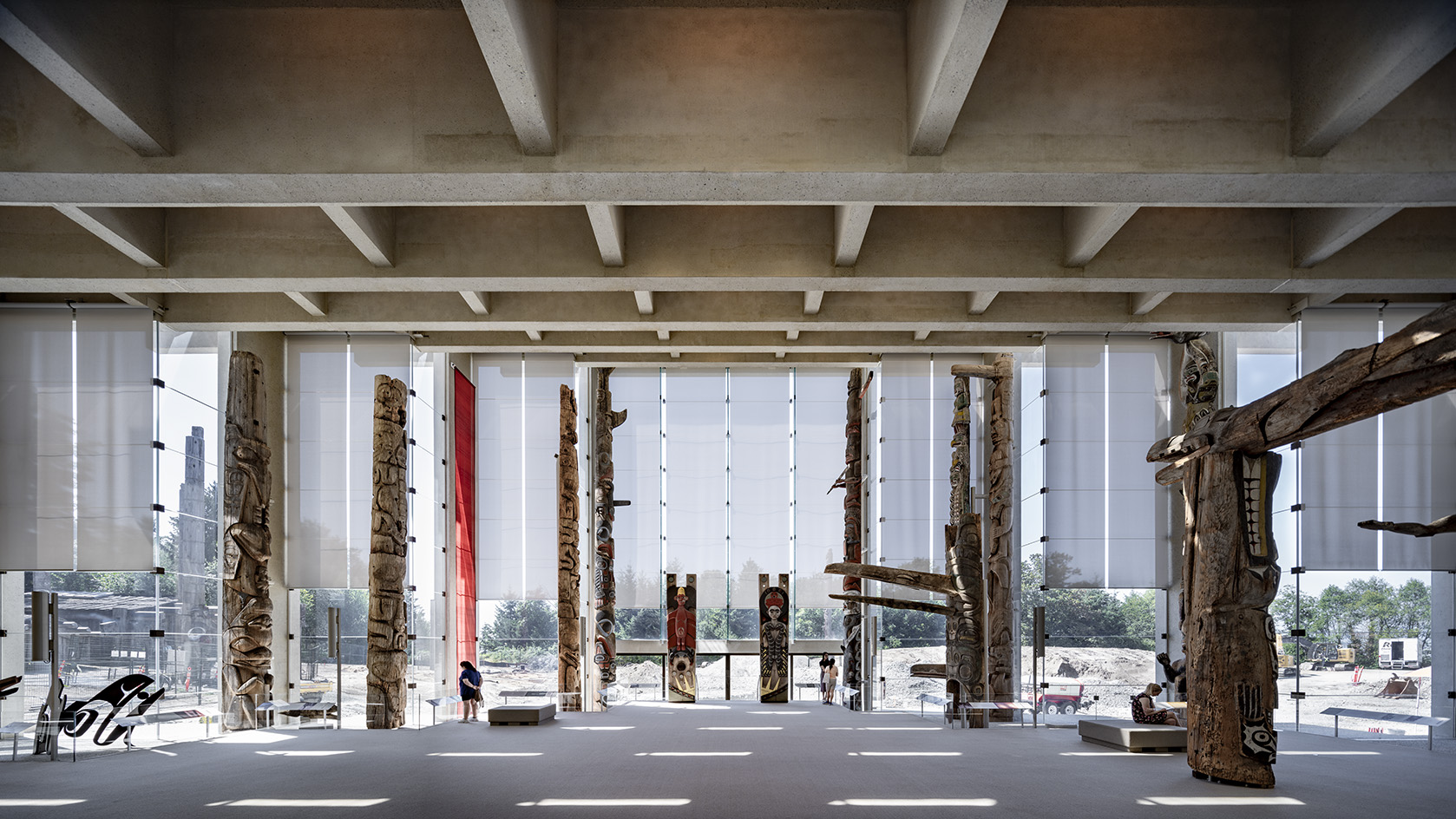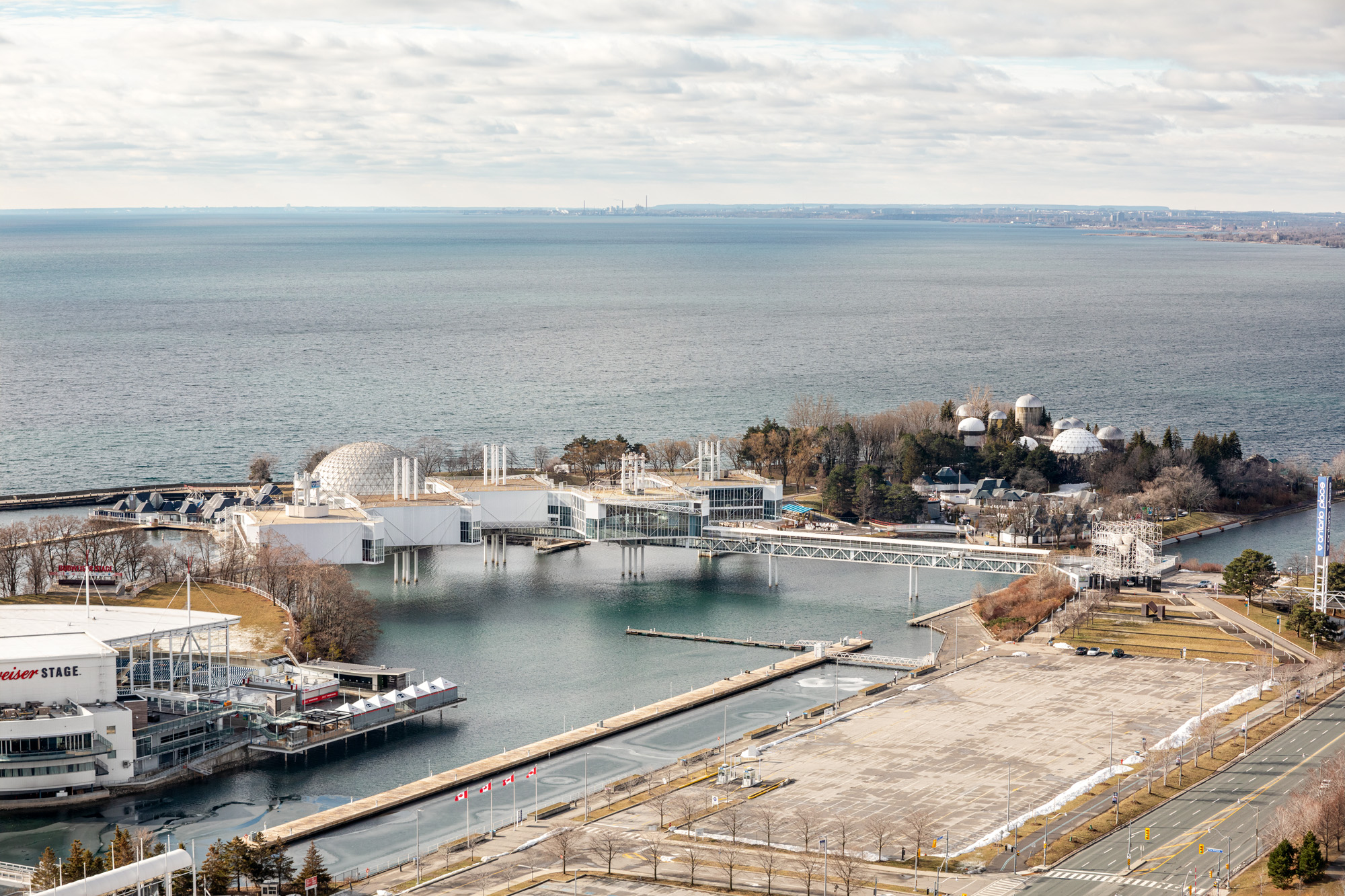Arthur Erickson's Museum of Anthropology at UBC has been given a new lease of life in Vancouver
After an extensive renovation, The Museum of Anthropology is part Shinto shrine, part cathedral, part longhouse – and a temple to learning

The reopening last month of Arthur Erickson’s 1976 Museum of Anthropology on what would have been the prolific architect’s 100th birthday, calls to mind a Japanese tradition.
As a meditation on the idea of impermanence, the Shikinen Sengu divine palace within the 2000-year-old Ise-Jingu Shinto shrine is demolished every 20 years and then rebuilt to the same dimensions but on an alternate site within the precinct. In a similar vein, Erickson’s modernist monument and Canada’s largest teaching museum has been reincarnated – after an 18-month closure for a $40 million seismic upgrade – with new aesthetic and architectural life.

Tour the refreshed Museum of Anthropology at UBC, Vancouver
This was both an architectural and curatorial resurrection. New seismic safety standards meant that Erickson’s iconic Great Hall had to be effectively destroyed and rebuilt.

The building’s choreography mirrors the whole process. Now as one walks through the dark canal of the east-facing entranceway that extends into the soaring Great Hall embracing the Western horizon, there is a palpable sense of rebirth.

But leading a tour of the building, long-time Erickson associate Nick Milkovich who worked on the original building and was tasked with its reconstruction said: 'If I did my job well, you won’t notice any difference.' Indeed, the changes are seamless and subtle, but significant.

The new architectural and curatorial vision – one that has added to the permanent exhibition 50 new artefacts and signage that contextualises the objects on display in terms of cultural genocide and contemporary discourse in the field and beyond – are of a piece with the original. The Great Hall was demolished and rebuilt with a precast columns and beam structure sitting on a cast-in-place concrete slab, thickened under the columns, all of which rests on isolators within the crawl space.

The old tempered glass, which would have shattered instantly in an earthquake, has been replaced by stronger, laminated sheets with UV protection. Plates of glass are cantilevered from the concrete columns and are fixed to a steel rod suspended from the channel beam, allowing them to move in concert with the movement of the structure. Now, 'they can dance with the building,' says Milkovich. The new configuration of glass, woven together by steel, lends a sense of architecture as textile art.
Wallpaper* Newsletter
Receive our daily digest of inspiration, escapism and design stories from around the world direct to your inbox.

Now there is an even clearer sense of the building’s connection to the land – and, if one goes deeper, a clearer view of the settler/patron’s place within the museum. With its cleaner, brighter transparency and new concrete columns, there is a greater articulation of Erickson’s original intent.

The Museum of Anthropology – part Shinto shrine, part cathedral, part longhouse – is a temple to learning. Its design hopes to transcend the colonial context of the museum, moving from the darkened entranceway through to the great hall, a place birthing light. Views of water and mountains beckon us into a future of reconciliation.
-
 Warp Records announces its first event in over a decade at the Barbican
Warp Records announces its first event in over a decade at the Barbican‘A Warp Happening,' landing 14 June, is guaranteed to be an epic day out
By Tianna Williams
-
 Cure your ‘beauty burnout’ with Kindred Black’s artisanal glassware
Cure your ‘beauty burnout’ with Kindred Black’s artisanal glasswareDoes a cure for ‘beauty burnout’ lie in bespoke design? The founders of Kindred Black think so. Here, they talk Wallpaper* through the brand’s latest made-to-order venture
By India Birgitta Jarvis
-
 The UK AIDS Memorial Quilt will be shown at Tate Modern
The UK AIDS Memorial Quilt will be shown at Tate ModernThe 42-panel quilt, which commemorates those affected by HIV and AIDS, will be displayed in Tate Modern’s Turbine Hall in June 2025
By Anna Solomon
-
 Smoke Lake Cabin is an off-grid hideaway only accessible by boat
Smoke Lake Cabin is an off-grid hideaway only accessible by boatThis Canadian cabin is a modular and de-mountable residence, designed by Anya Moryoussef Architect (AMA) and nestled within Algonquin Provincial Park in Ontario
By Tianna Williams
-
 Ten contemporary homes that are pushing the boundaries of architecture
Ten contemporary homes that are pushing the boundaries of architectureA new book detailing 59 visually intriguing and technologically impressive contemporary houses shines a light on how architecture is evolving
By Anna Solomon
-
 Explore the Perry Estate, a lesser-known Arthur Erickson project in Canada
Explore the Perry Estate, a lesser-known Arthur Erickson project in CanadaThe Perry estate – a residence and studio built for sculptor Frank Perry and often visited by his friend Bill Reid – is now on the market in North Vancouver
By Hadani Ditmars
-
 A new lakeshore cottage in Ontario is a spectacular retreat set beneath angled zinc roofs
A new lakeshore cottage in Ontario is a spectacular retreat set beneath angled zinc roofsFamily Cottage by Vokac Taylor mixes spatial gymnastics with respect for its rocky, forested waterside site
By Jonathan Bell
-
 We zoom in on Ontario Place, Toronto’s lake-defying 1971 modernist showpiece
We zoom in on Ontario Place, Toronto’s lake-defying 1971 modernist showpieceWe look back at Ontario Place, Toronto’s striking 1971 showpiece and modernist marvel with an uncertain future
By Dave LeBlanc
-
 This Canadian guest house is ‘silent but with more to say’
This Canadian guest house is ‘silent but with more to say’El Aleph is a new Canadian guest house by MacKay-Lyons Sweatapple, designed for seclusion and connection with nature, and a Wallpaper* Design Awards 2025 winner
By Ellie Stathaki
-
 Wallpaper* Design Awards 2025: celebrating architectural projects that restore, rebalance and renew
Wallpaper* Design Awards 2025: celebrating architectural projects that restore, rebalance and renewAs we welcome 2025, the Wallpaper* Architecture Awards look back, and to the future, on how our attitudes change; and celebrate how nature, wellbeing and sustainability take centre stage
By Ellie Stathaki
-
 The case of the Ontario Science Centre: a 20th-century architecture classic facing an uncertain future
The case of the Ontario Science Centre: a 20th-century architecture classic facing an uncertain futureThe Ontario Science Centre by Raymond Moriyama is in danger; we look at the legacy and predicament of this 20th-century Toronto gem
By Dave LeBlanc